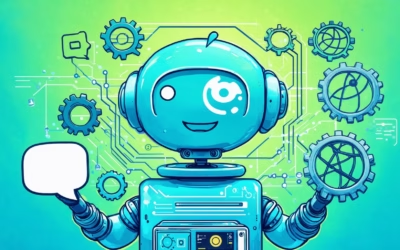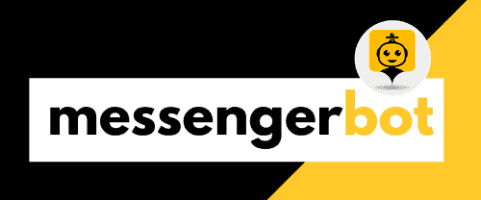In the rapidly evolving landscape of artificial intelligence, chatbot products have emerged as game-changers in customer service, marketing, and user engagement. As businesses seek to streamline operations and enhance user experiences, the quest for the best AI chatbot has intensified. While ChatGPT has dominated headlines, a new wave of innovative chatbots is challenging its supremacy. This article delves into the top 5 chatbot products, exploring their unique features, applications, and the potential to outperform ChatGPT. From free chatbot products to premium solutions, we’ll navigate the diverse world of chatbots online, showcasing exemplary implementations and guiding you through the process of selecting the ideal chatbot for your website. Join us as we uncover the most convincing chatbots, analyze chatbot marketing examples, and peek into the future of this transformative technology.
The Evolution of Chatbot Technology
The journey of chatbot technology has been nothing short of remarkable. From simple rule-based systems to sophisticated AI-powered conversational agents, chatbots have come a long way. At Messenger Bot, we’ve been at the forefront of this evolution, constantly innovating to provide cutting-edge chatbot solutions that revolutionize customer interactions.
As we delve into the world of chatbots, it’s crucial to understand the various types and their capabilities. Let’s explore the four main categories that have shaped the landscape of conversational AI.
What are the 4 types of chatbots?
- Rule-Based Chatbots: These are the simplest form of chatbots, operating on a set of predefined rules. They can handle basic queries but lack the ability to understand context or learn from interactions.
- AI-Powered Chatbots: Leveraging machine learning and natural language processing, these chatbots can understand context and improve over time. Our AI chat bot falls into this category, offering intelligent responses and adaptability.
- Hybrid Chatbots: Combining rule-based logic with AI capabilities, hybrid chatbots offer the best of both worlds. They can handle complex queries while maintaining the reliability of rule-based systems.
- Voice-Enabled Chatbots: These chatbots integrate speech recognition technology, allowing users to interact through voice commands. They’re becoming increasingly popular in smart home devices and virtual assistants.
Understanding these types is crucial for businesses looking to implement the best AI chatbot for their needs. At Messenger Bot, we specialize in AI-powered and hybrid chatbots, offering versatile solutions that cater to diverse business requirements.
Advancements in AI and Natural Language Processing
The rapid progress in AI and Natural Language Processing (NLP) has been the driving force behind the evolution of chatbots. These advancements have transformed chatbots from simple question-answering tools to sophisticated conversational agents capable of understanding context, sentiment, and even humor.
Key developments include:
- Improved Language Understanding: Modern NLP algorithms can interpret user intent more accurately, even with colloquial language or typos.
- Contextual Awareness: AI chatbots can now maintain context throughout a conversation, providing more coherent and relevant responses.
- Sentiment Analysis: Advanced chatbots can detect user emotions, allowing for more empathetic and tailored interactions.
- Multilingual Capabilities: Our multilingual messenger bots can communicate in various languages, breaking down global communication barriers.
These advancements have significantly enhanced the user experience, making chatbots an indispensable tool for businesses across industries. Companies like Zendesk and Amazon have leveraged these technologies to create robust customer service chatbots, setting new standards in automated support.
At Messenger Bot, we’re constantly integrating these cutting-edge technologies into our platform, ensuring that our clients have access to the most advanced chatbot solutions available. Our commitment to innovation drives us to push the boundaries of what’s possible in conversational AI, helping businesses create more engaging and efficient customer interactions.

Top Chatbot Products in the Market
As the demand for efficient customer service solutions grows, the market for chatbot products has expanded rapidly. At Messenger Bot, we’ve witnessed firsthand how these AI-powered tools are transforming business communications. Let’s explore some of the leading chatbot solutions available today, including both free and premium options.
Which chatbot is best?
Determining the “best” chatbot depends on your specific needs, but several stand out for their capabilities and user-friendliness. Our Messenger Bot platform offers a comprehensive suite of features, including AI-driven responses and multi-channel support. Other notable contenders include:
- Drift: Known for its conversational marketing approach
- Intercom: Offers a blend of live chat and chatbot functionality
- ManyChat: Specializes in Facebook Messenger and Instagram automation
Each of these platforms, including ours, brings unique strengths to the table. The best choice often depends on your specific industry, target audience, and desired features.
Comparing Free Chatbot Products and Premium Solutions
When it comes to free chatbot products, several options provide basic functionality without upfront costs. These can be great for small businesses or those just starting with chatbot technology. Some popular free options include:
- MobileMonkey: Offers a free plan with limited features
- Chatfuel: Provides a free tier for Facebook Messenger bots
- Tidio: Offers a free plan with basic chatbot functionality
However, premium solutions like our Messenger Bot platform offer advanced features that can significantly enhance your customer engagement strategy. These may include:
- Advanced AI and natural language processing capabilities
- Seamless integration with multiple platforms and CRM systems
- Customizable workflows and automations
- Comprehensive analytics and reporting tools
While free chatbots can be a good starting point, businesses looking for scalable, feature-rich solutions often find that premium options provide better long-term value. Our platform, for instance, offers a free trial that allows you to experience the full range of premium features before making a commitment.
As the chatbot industry continues to evolve, we’re committed to staying at the forefront of innovation. Whether you’re looking for a simple solution or a sophisticated AI-powered chatbot, there’s a product out there to meet your needs. The key is to carefully evaluate your requirements and choose a platform that aligns with your business goals and customer service philosophy.
AI Chatbots: Beyond ChatGPT
As we delve deeper into the world of chatbot products, it’s clear that AI-powered conversational agents have evolved far beyond the capabilities of ChatGPT. While ChatGPT has undoubtedly made waves in the AI community, there are several other AI chatbots that offer unique features and specialized functionalities tailored to specific business needs.
At Messenger Bot, we’ve witnessed firsthand the rapid advancements in AI chatbot technology. Our platform leverages cutting-edge AI to provide businesses with powerful chatbot features that go beyond simple text-based interactions. From multilingual support to advanced e-commerce integrations, we’re constantly pushing the boundaries of what’s possible with AI chatbots.
Which AI is better than ChatGPT?
While ChatGPT has set a high bar for conversational AI, several other chatbot products offer compelling alternatives that may be better suited for specific use cases:
- Google’s LaMDA: Known for its impressive conversational abilities and focus on factual accuracy.
- OpenAI’s GPT-4: The successor to GPT-3, offering improved language understanding and generation capabilities.
- Brain Pod AI’s Chat Assistant: A versatile AI chatbot that excels in multilingual support and customization for various industries.
- Anthropic’s Claude: Designed with a strong emphasis on ethics and safety in AI interactions.
It’s important to note that the “best” AI chatbot often depends on the specific needs of your business. At Messenger Bot, we focus on providing a customizable chatbot solution that can be tailored to meet the unique requirements of each client, ensuring optimal performance across various platforms and use cases.
Innovative Features of Advanced Chatbot AI
The latest generation of AI chatbots comes packed with innovative features that set them apart from their predecessors:
- Multimodal Interactions: Advanced chatbots can now process and generate not just text, but also images, audio, and even video content.
- Contextual Understanding: AI chatbots have become adept at maintaining context over long conversations, providing more coherent and relevant responses.
- Sentiment Analysis: Many chatbots now incorporate sentiment analysis to gauge user emotions and adjust their responses accordingly.
- Personalization: AI-driven chatbots can learn from past interactions to provide personalized experiences for each user.
- Integration Capabilities: Modern chatbots seamlessly integrate with various business systems, from CRMs to e-commerce platforms, enhancing their utility across different departments.
At Messenger Bot, we’ve incorporated many of these advanced features into our platform. Our AI-powered chatbots offer sophisticated natural language processing, multilingual support, and seamless integration with popular social media platforms and websites.
As the chatbot industry continues to evolve, we’re committed to staying at the forefront of innovation. Our team constantly explores new AI technologies and chatbot best practices to ensure that our clients have access to the most advanced chatbot products available.
IV. Exemplary Chatbot Implementations
As chatbot technology continues to evolve, we’re seeing increasingly sophisticated and effective implementations across various industries. At Messenger Bot, we’re constantly inspired by the innovative ways businesses are leveraging chatbots to enhance customer experiences and streamline operations.
Let’s explore some standout examples of chatbot implementations and how they’re driving engagement in the digital landscape.
A. What is the best example of a chatbot?
While it’s challenging to crown a single “best” chatbot, several implementations stand out for their effectiveness and innovation. One exemplary chatbot is Sephora’s Virtual Artist, which combines AI with augmented reality to allow customers to try on makeup virtually. This chatbot not only provides product recommendations but also enhances the online shopping experience, bridging the gap between digital and physical retail.
Another notable example is Domino’s Pizza chatbot, which enables customers to order pizza through various platforms, including Facebook Messenger and Slack. This messenger bot simplifies the ordering process, remembers customer preferences, and even allows users to track their orders in real-time, showcasing how chatbots can streamline e-commerce operations.
At Messenger Bot, we’ve developed AI-powered chatbots that rival these industry leaders, offering personalized experiences and efficient customer service across multiple channels. Our chatbot products are designed to adapt to various business needs, from lead generation to customer support.
B. Chatbot Marketing Examples That Drive Engagement
Effective chatbot marketing strategies can significantly boost engagement and conversions. Here are some compelling examples:
- H&M’s Style Advisor: This fashion chatbot offers personalized outfit recommendations based on user preferences, effectively combining product discovery with a tailored shopping experience.
- Whole Foods’ Recipe Bot: By providing recipe suggestions based on emojis or ingredients, this chatbot keeps users engaged while subtly promoting Whole Foods products.
- National Geographic’s Einstein Bot: This educational chatbot allows users to “chat” with Albert Einstein, showcasing how chatbots can be used for engaging content delivery and brand storytelling.
These examples demonstrate how chatbots can be powerful tools for driving engagement on social platforms like Facebook and Instagram. At Messenger Bot, we’ve incorporated these insights into our chatbot products, enabling businesses to create compelling, interactive experiences that resonate with their audience.
By leveraging AI and natural language processing, our chatbots can engage in meaningful conversations, provide personalized recommendations, and even use humor to create memorable interactions. This level of sophistication in chatbot marketing not only drives engagement but also enhances brand loyalty and customer satisfaction.
As we continue to innovate in the field of AI-powered customer service bots, we’re excited to see how businesses will leverage these technologies to create even more impactful chatbot implementations in the future.
V. Choosing the Right Chatbot for Your Website
When it comes to selecting the perfect chatbot for your website, it’s crucial to consider various factors that align with your business goals and customer needs. As a leading provider of chatbot products, we understand the importance of finding a solution that seamlessly integrates with your existing systems and enhances user experience.
A. Best Chatbot for Website Integration
Integrating a chatbot into your website can significantly improve customer engagement and streamline operations. While there are numerous options available, some stand out for their ease of integration and powerful features. Messenger Bot, for instance, offers a simple code snippet that can be easily added to any website, enabling businesses to deploy sophisticated chatbot functionalities without extensive technical knowledge.
Other notable chatbot platforms like Intercom and Drift also provide robust solutions for website integration. However, it’s essential to evaluate each option based on your specific requirements, such as customization capabilities, multi-language support, and integration with existing CRM systems.
B. Evaluating Chatbot Softwares and Platforms
When assessing chatbot softwares and platforms, consider the following key factors:
1. AI Capabilities: Look for chatbots with advanced natural language processing (NLP) to ensure accurate understanding and response to user queries.
2. Customization Options: The ability to tailor the chatbot’s appearance and behavior to match your brand is crucial for a cohesive user experience.
3. Analytics and Reporting: Robust analytics tools help you measure the chatbot’s performance and gain insights into customer interactions.
4. Scalability: Choose a platform that can grow with your business and handle increasing volumes of conversations.
5. Integration Capabilities: Ensure the chatbot can integrate seamlessly with your existing tools and workflows.
6. Multilingual Support: If you serve a global audience, opt for a chatbot that can communicate in multiple languages, like our multilingual chatbot solution.
By carefully evaluating these aspects, you can select a chatbot platform that not only meets your current needs but also supports your long-term business objectives. Remember, the right chatbot should enhance your customer service, drive engagement, and ultimately contribute to your bottom line.
VI. The Chatbot Industry Landscape
The chatbot industry has experienced explosive growth in recent years, with numerous companies vying for market share in this rapidly evolving sector. As businesses increasingly recognize the value of automated customer interactions, the demand for sophisticated chatbot products continues to rise. We at Messenger Bot have witnessed firsthand the transformative impact of AI-powered chatbots on customer engagement and operational efficiency.
A. Top Chatbot Companies and Vendors
The chatbot market is populated by a diverse array of vendors, each offering unique features and capabilities. While we pride ourselves on our cutting-edge chatbot features, it’s important to acknowledge other significant players in the industry:
1. Intercom: Known for its customer messaging platform, Intercom offers chatbot solutions integrated with their broader customer communication suite.
2. MobileMonkey: Specializes in multi-channel chatbots, particularly for Facebook Messenger and Instagram.
3. Drift: Focuses on conversational marketing and sales chatbots, popular among B2B companies.
4. ManyChat: Offers a user-friendly platform for creating Facebook Messenger bots without coding.
5. Chatfuel: Another popular choice for creating Facebook Messenger bots, known for its ease of use.
6. HubSpot: Provides chatbot functionality as part of its comprehensive CRM and marketing automation platform.
7. IBM Watson Assistant: Offers advanced AI capabilities for building sophisticated chatbots and virtual agents.
While these companies offer valuable solutions, we believe our Messenger Bot platform stands out for its seamless integration across multiple channels and advanced AI capabilities.
B. Exploring the Comprehensive Chatbot Products List
The chatbot products landscape is vast and varied, catering to different business needs and technical requirements. Here’s a more comprehensive look at the types of chatbot products available:
1. Rule-Based Chatbots: These follow predefined rules and are suitable for simple, structured conversations. They’re often used for basic customer service queries or FAQs.
2. AI-Powered Chatbots: Utilizing natural language processing (NLP) and machine learning, these bots can handle more complex interactions and improve over time. Our AI chatbot falls into this category, offering sophisticated conversational abilities.
3. Hybrid Chatbots: Combining rule-based logic with AI capabilities, these bots offer a balance between structured responses and flexible conversation.
4. Voice-Enabled Chatbots: These integrate with voice assistants like Alexa or Google Assistant, enabling voice-based interactions.
5. Social Media Chatbots: Designed specifically for platforms like Facebook Messenger, WhatsApp, or Twitter, these bots engage customers where they already spend their time.
6. E-commerce Chatbots: Specialized in handling product inquiries, order tracking, and facilitating purchases directly through chat interfaces.
7. HR Chatbots: Used for internal communications, employee onboarding, and answering HR-related queries.
8. Multilingual Chatbots: Capable of communicating in multiple languages, these bots are crucial for businesses with a global customer base. Our multilingual capabilities make us a strong contender in this category.
As the industry continues to evolve, we’re seeing an increasing focus on AI-driven chatbot optimization and integration with other business systems. The future of chatbots lies in their ability to provide more personalized, context-aware interactions across multiple touchpoints in the customer journey.
VII. Future Trends in Chatbot Technology
As we look ahead, the landscape of chatbot technology is evolving rapidly, promising exciting advancements that will reshape how businesses interact with customers. At Messenger Bot, we’re at the forefront of these innovations, constantly updating our platform to incorporate cutting-edge features that enhance customer experiences.
A. Emerging Chatbot Tools and Features
The future of chatbot products is brimming with potential. We’re seeing a surge in AI-powered tools that are revolutionizing the capabilities of chatbots. Some of the most promising emerging features include:
1. Emotion Recognition: Advanced AI algorithms are enabling chatbots to detect and respond to user emotions, creating more empathetic interactions.
2. Predictive Analytics: Chatbots are becoming more proactive, anticipating customer needs based on historical data and behavior patterns.
3. Voice-Enabled Chatbots: The integration of voice recognition technology is making conversations with chatbots more natural and accessible.
4. Augmented Reality (AR) Integration: Chatbots are beginning to utilize AR to provide immersive product demonstrations and virtual try-ons.
5. Blockchain for Enhanced Security: Some chatbot platforms are incorporating blockchain technology to ensure secure transactions and data protection.
These advancements are not just theoretical; they’re being implemented by industry leaders. For instance, IBM Watson is pioneering emotion recognition in their chatbot solutions, while Amazon’s Alexa is at the forefront of voice-enabled AI assistants.
B. The Role of Chatbots in Enhancing Online Customer Experience
Chatbots are becoming indispensable in crafting superior online customer experiences. Here’s how they’re making a difference:
1. 24/7 Availability: Chatbots ensure that customers receive instant responses at any time, significantly improving customer satisfaction.
2. Personalization at Scale: By leveraging AI and machine learning, chatbots can offer tailored recommendations and solutions to each customer.
3. Streamlined Customer Journey: From initial inquiry to post-purchase support, chatbots guide customers seamlessly through their journey.
4. Multilingual Support: Advanced chatbots, like those offered by Messenger Bot, can communicate in multiple languages, breaking down language barriers in global commerce.
5. Data Collection and Analysis: Chatbots gather valuable customer insights, helping businesses refine their products and services.
6. Reduced Wait Times: By handling routine queries, chatbots free up human agents to focus on more complex issues, reducing overall wait times.
The impact of these enhancements is significant. According to a Juniper Research study, chatbots are expected to save businesses over $8 billion annually by 2022, primarily through improved customer service efficiency.
As we continue to innovate at Messenger Bot, we’re committed to incorporating these emerging trends into our platform. Our goal is to provide businesses with cutting-edge chatbot solutions that not only meet current needs but also anticipate future demands in customer engagement.
The future of chatbot technology is bright, and its role in enhancing online customer experiences is set to become even more crucial. By staying ahead of these trends, businesses can ensure they’re well-positioned to meet evolving customer expectations and maintain a competitive edge in the digital marketplace.






